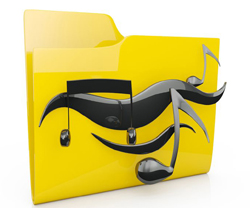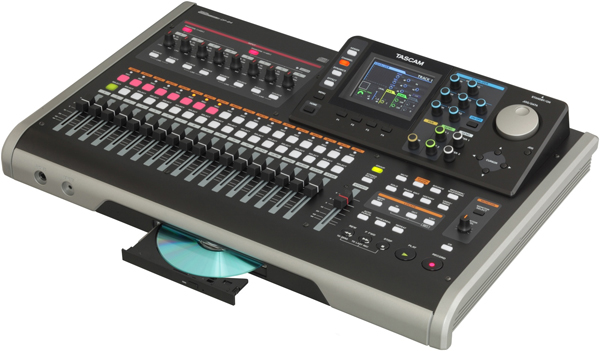Live recording has benefitted mightily from the advances in digital audio, and it’s also offered a lot of pluses for recording in general, including the ability to manipulate audio in a computer using software programs that allow basic mixing and editing functions, along with doing “creative” things like sample audio sources, replace existing sounds, change pitch and tempo.
Another bonus is the facility to transfer files quickly from storage media to computers or even over the Internet with no loss of quality.
Digital recording devices come in an assortment of shapes and sizes, with various features aimed at specific intended uses. The most common file formats are WAV (wave) and mp3.
Drives and cards storing these files can be internal, external, removable or a combination to store recording data, Recordable CDs are still a very common media, often used as the removable media in many units.
Flash cards are popular in smaller units, and are also used in larger machines as the removable media. The most common of these small cards are SD (secure digital) and SDHC (secure digital high capacity) cards. They come in three sizes, including micro (15 × 11 × 1 mm), mini (21.5 × 20 × 1.4 mm), and standard (32 × 24 × 2.1 mm), with capacities to hold up to 32 gigabytes (GB).
Some units incorporate hard drives or hard disks as their main internal storage, with a few offering them as removable drives and external storage, increasing capacity and allowing them to be “swapped out” as needed.
Solid state drives are becoming popular because they use no moving parts, making them less susceptible to physical shock, in addition to operating silently and supplying faster access to the data. These features come at a price, with SSD drives typically more expensive than traditional hard drives for the same amount of storage capacity.
Let’s take a look at the various types of digital recording devices for live applications – and examples – that are currently on the market.
Stand-alone multi-track recorders. Providing a simple way to record and play back numerous tracks of audio, these units are excellent for archiving live musical shows. They also work very well in performing “virtual sound checks,” where a recording of the instruments and even vocals from the act are used by the sound crew to adjust the PA with the actual instruments and sounds from the artists,
without the hassle of having the artists onstage.
Some models are available with analog inputs and outputs, while others may also offer direct connection to digital signals using various formats, allowing the unit to be easily interfaced into a digital network.
A stand-alone unit that offers both analog and digital signal connectivity is the BlackBox BBR1U from JoeCo. It provides 24-track recording capability to any user-supplied USB drive and records in the standard broadcast wave file (BWF) format. The front panel provides full metering and control while the rear panel connections include 24 inputs via D25, and ADAT TOSlink inputs and outputs, with an additional eight loop-through analog connections.
The BlackBox fits well in racks, measuring just 1RU by 5.9 inches deep and weighing just 5.3 pounds. Models are available that interface with MADI, AES/EBU and most recently, Audinate Dante.
Full-sized flash and hard drive recorders. These have taken over the job once held CD and cassette decks. In addition to recording, they’re also often utilized as playback decks on events.
For example, the Denon DNF650R can record WAV or MP3 files to SD or SDHC cards, or various USB devices. The rear panel offers XLR, RCA, AES/EBU, S/PDIF, and RS232 connections, and the front panel features a large OLED screen, +/- 20 percent pitch control and a file search jog wheel.
It occupies 1RU, is 12.8 inches deep, and weighs just over 8 pounds.
Portable studios. Recorders that combine a mixing console and multi-track recorder into one unit. Many models also feature built in effects and an optical drive so that a finished recording can be copied to a CD.
The Tascam DP-24 is a 24-track digital recording workstation that allows up to 8 simultaneous record tracks and offers a full suite of effects and processing. It features eight XLR-1/4-inch combo inputs with phantom power, 1/4-inch and RCA outputs, USB and MIDI I/O.
The unit records to SD/SDHD cards and features a built in CD burner and sports 18 channel faders as well as a master fader. It measures 4 x 21.3 x 13.4 inches (h x w x d) and weighs just over 13 pounds.























